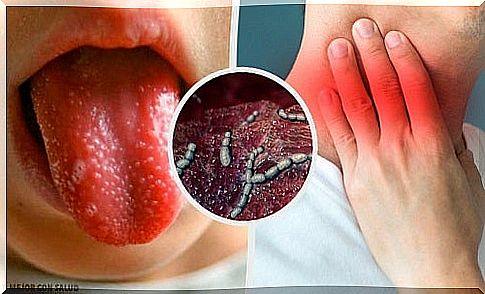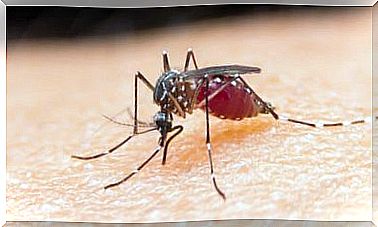Causes And Symptoms Of Scarlet Fever

Scarlet fever is also known as scarlet fever. This is a disease that most commonly affects children aged 5-12 years, being rare in adults. But what are the causes and symptoms of scarlet fever and what are the complications it can cause?
Scarlet fever is an infection caused by bacteria called group A streptococci. These bacteria are commonly found on the skin, especially on the nose and throat. Streptococci are the same bacteria that cause streptococcal pharyngitis.
Scarlet fever is not considered a very serious disease, but there are chances of complications. That is why patients with scarlet fever need medical attention as soon as possible. When the disease is treated in time, the patient can heal relatively easily. Find out in the next article the causes and symptoms of scarlet fever and find out what complications can occur as a result of this disease.
What are the causes and symptoms of scarlet fever?
Causes of the disease

- The disease occurs as a result of contamination, when a child comes in contact with another infected child, for example, with a runny nose or saliva after coughing or sneezing. Also, a sick child can contaminate others during speech, through saliva.
- Contamination can also occur when a child eats from the same containers from which a child infected with streptococci ate. The rash, ie the rash of the skin, a symptom of scarlet fever, is another source of infection.
Children are most likely to get sick at school. Unfortunately, the little ones are not very meticulous in terms of hygiene and often end up eating with the same cutlery used by one of their colleagues or sharing food from which a sick child ate.
Scarlet fever symptoms

The incubation period, ie the period from the moment of infection until the onset of the first symptoms is very short, usually a day or two. The sudden onset of the disease is characterized by high fever, sore throat and altered general health.
After these symptoms, the bacteria release a toxin that causes rashes on the skin. These rashes, also called rashes, are red and initially manifest on the neck and chest. The eruptions have a texture similar to abrasive paper. The rash then spreads all over the body over a period of about a week.
The rash is more intense in the region of the flexion folds, such as the armpit, elbow, groin area, etc. The tongue becomes very red and inflamed, but it also has a layer of whitish substance. The disease is also manifested by fever, abdominal pain, vomiting and muscle aches.
It is important to remember that the patient will have difficulty swallowing and will eat very hard due to the symptoms manifested on the tongue and throat. It is recommended to eat soft-textured foods and liquids and, of course, isolate the patient in the hospital.
Diagnosis and prognosis

The disease is diagnosed following a physical examination by a doctor, who will also perform an analysis to detect streptococcus. This is done by taking a sample from the throat with a cotton swab. The analysis will determine the type of bacteria in the throat and will be able to confirm the presence of scarlet fever. A blood test can also be performed.
The prognosis is favorable in patients who are treated properly. The symptoms may appear for two to three weeks, after which they disappear completely. When the rash heals, the process of flaking begins (peeling of the skin), which usually takes place at the level of the fingers and toes, respectively in the groin area. This process can take several weeks.
Although rare, there are chances that scarlet fever can cause some complications that can affect your long-term health, and some of these can be very serious. The complications caused by scarlet fever are the following:
- Rheumatic fever
- Kidney disease, especially acute post-streptococcal glomerulonephritis, a disease that causes inflammation of the kidneys
- Otitis media (middle ear infection)
- Skin infections
- Abscesses in the throat, manifested by the appearance of pus
- Arthritis
- Pneumonia
- Liver disease
- Inflammation of the lymph nodes
- Sinus infection
Now that you have learned more about the causes and symptoms of scarlet fever, you have discovered how important it is to apply the treatment carefully and avoid complications that, although rare, can occur unexpectedly. Usually, treatment consists of the administration of antibiotics, which prove their effectiveness quickly.









